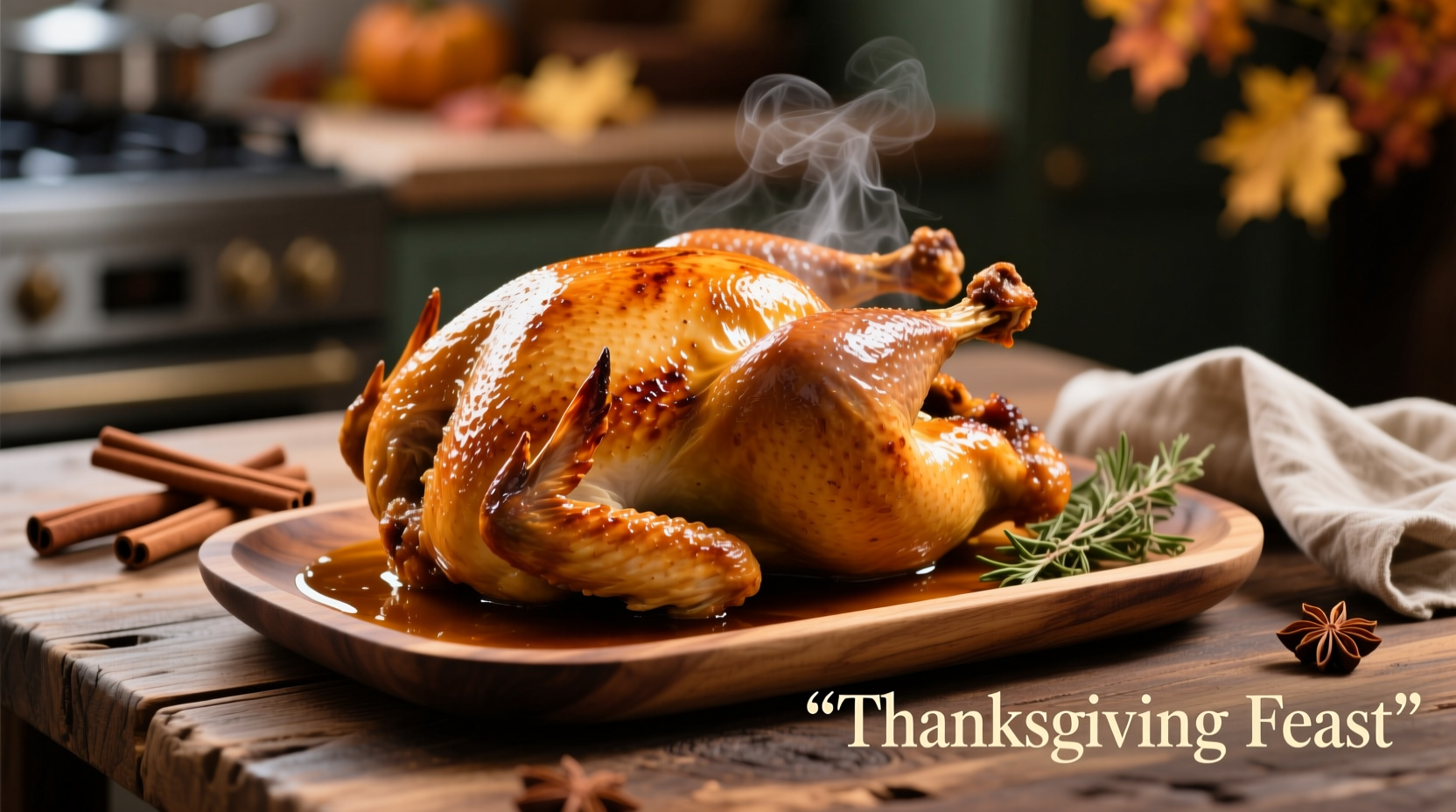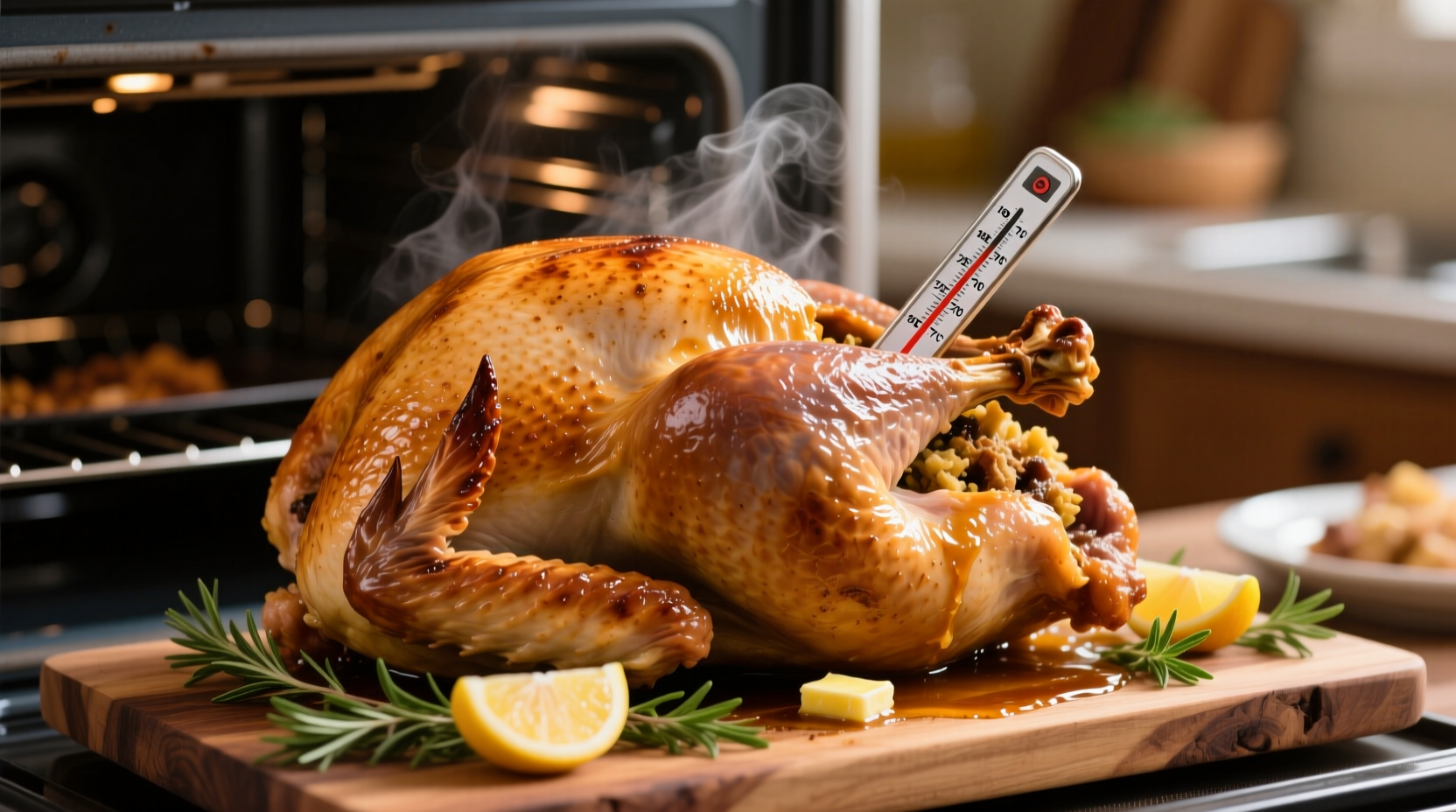The perfect cooking time for a turkey depends on its weight: for an unstuffed turkey, cook at 325°F for approximately 13 minutes per pound. A 12-14 pound turkey takes 3 to 3¾ hours, while a 20-24 pound bird requires 4½ to 5 hours. Always verify doneness with a meat thermometer—turkey is safe to eat when the thickest part of the breast reaches 165°F and the innermost part of the thigh reaches 175°F.
Nothing says holiday celebration quite like a perfectly roasted turkey, but getting the cooking time right can make or break your meal. Undercooked turkey poses serious food safety risks, while overcooked turkey becomes dry and disappointing. This comprehensive guide delivers precise cooking times based on USDA food safety standards and professional chef techniques—so you can serve a moist, flavorful centerpiece that impresses every guest.
Understanding Turkey Cooking Variables
Before you pop that bird in the oven, recognize these critical factors that affect cooking time:
- Weight: The single biggest factor—larger turkeys take proportionally longer but slightly less time per pound
- Stuffing status: Stuffed turkeys require 30-50 minutes additional cooking time
- Oven temperature: 325°F is the sweet spot for even cooking without drying
- Starting temperature: A refrigerated turkey needs slightly longer than room-temperature
- Rack position: Middle rack ensures even heat circulation
Official Turkey Cooking Time Guidelines
These recommended times come from the USDA Food Safety and Inspection Service, the gold standard for poultry preparation safety. Always use these as starting points, but remember that actual cooking time varies based on your specific oven and turkey.
| Turkey Weight | Unstuffed Cooking Time | Stuffed Cooking Time |
|---|---|---|
| 8-10 lbs | 2½-3 hours | 3-3½ hours |
| 10-14 lbs | 3-3¾ hours | 3¾-4¼ hours |
| 14-18 lbs | 3¾-4¼ hours | 4¼-4¾ hours |
| 18-20 lbs | 4¼-4½ hours | 4½-5 hours |
| 20-24 lbs | 4½-5 hours | 5-5½ hours |
Source: USDA Food Safety and Inspection Service
Step-by-Step Turkey Cooking Process
Preparation Phase (30-60 minutes before cooking)
Remove turkey from refrigerator 30-60 minutes before roasting. This reduces cooking time slightly and promotes even cooking. Pat the skin thoroughly dry with paper towels—moisture is the enemy of crispy skin. If stuffing, prepare your stuffing just before placing it in the turkey (never stuff ahead of time for food safety reasons).
Roasting Phase (The Critical Hours)
Position turkey breast-side up on a rack in a shallow roasting pan. Insert an oven-safe meat thermometer into the thickest part of the thigh without touching bone. Roast at a steady 325°F. Baste every 45-60 minutes with pan juices, but minimize oven door opening to maintain consistent temperature.

Doneness Verification (Non-negotiable step)
When the thermometer approaches target temperature, verify readings in multiple locations:
- Chest meat: 165°F at the thickest part
- Thigh meat: 175°F in the innermost part
- Wing joint: 170°F minimum
- Stuffing: 165°F if stuffed
Remember: Visual cues like clear juices or leg wiggle are unreliable. Only a meat thermometer provides food-safe verification.
Avoiding Common Turkey Cooking Mistakes
Even experienced cooks make these critical errors that affect cooking time and safety:
- Not accounting for carryover cooking: Turkey continues cooking 5-10°F after removal from oven
- Starting with frozen turkey: Adds 50% more cooking time and creates food safety risks
- Over-basting: Frequent oven opening can add 30+ minutes to total cooking time
- Ignoring oven calibration: Many home ovens run 25°F off—use an independent oven thermometer
- Cutting too soon: Resting for 20-30 minutes allows juices to redistribute
Special Considerations for Different Cooking Methods
Traditional oven roasting isn't your only option. These alternative methods have different time requirements:
- Convection ovens: Reduce cooking time by 25% but maintain same internal temperature targets
- Grill/Smoker: At 275-300°F, expect 15-20 minutes per pound with longer cooking but superior flavor
- Spatchcocked turkey: Butterflied turkey cooks in half the time (about 6-9 minutes per pound)
- Sous vide: Requires 12-24 hours at 145-150°F followed by quick sear for skin
Food Safety Timeline: From Raw to Ready
Understanding this critical timeline prevents foodborne illness:
- 0-4 hours: Safe thawing time in refrigerator (allow 24 hours per 4-5 pounds)
- 1-2 hours: Maximum safe time for turkey at room temperature before cooking
- 140°F-165°F: Danger zone where bacteria multiply rapidly—minimize time in this range
- 165°F+: Pathogens destroyed, safe to eat
- 2 hours: Maximum safe time for cooked turkey at room temperature
This timeline comes from the FDA Food Code, which establishes science-based food safety standards used by health departments nationwide. Following these guidelines prevents salmonella and campylobacter risks associated with undercooked poultry.
Troubleshooting Turkey Cooking Issues
When things don't go according to plan, these solutions save your meal:
- Browning too fast: Tent breast area with foil while continuing to cook
- Cooking too slowly: Increase oven temperature by 25°F and monitor closely
- Uneven cooking: Rotate pan 180 degrees halfway through cooking time
- Overcooked breast: Carve immediately and cover with gravy to restore moisture
- Undercooked in spots: Return to oven and check temperature every 10 minutes
Professional Chef's Pro Tips
After years working in professional kitchens, I've learned these time-saving techniques:
- Brine your turkey for 12-24 hours to reduce cooking time slightly while improving moisture retention
- Use a remote digital thermometer with multiple probes to monitor different areas simultaneously
- Place ice packs on breast meat for 30 minutes before roasting to create more even cooking between breast and thigh
- Calculate cooking time based on the breast portion, which cooks faster than dark meat
- When in doubt, cook to temperature rather than time—every turkey and oven behaves differently
Conclusion: Perfect Turkey Every Time
Mastering turkey cooking time combines understanding the science of heat transfer with practical kitchen experience. While the guidelines provide a reliable starting point, your specific turkey, oven, and cooking method will influence the exact time needed. The only foolproof method is using a reliable meat thermometer to verify internal temperatures. With these guidelines and professional techniques, you'll consistently produce a perfectly cooked turkey that's both safe to eat and deliciously moist.











 浙公网安备
33010002000092号
浙公网安备
33010002000092号 浙B2-20120091-4
浙B2-20120091-4